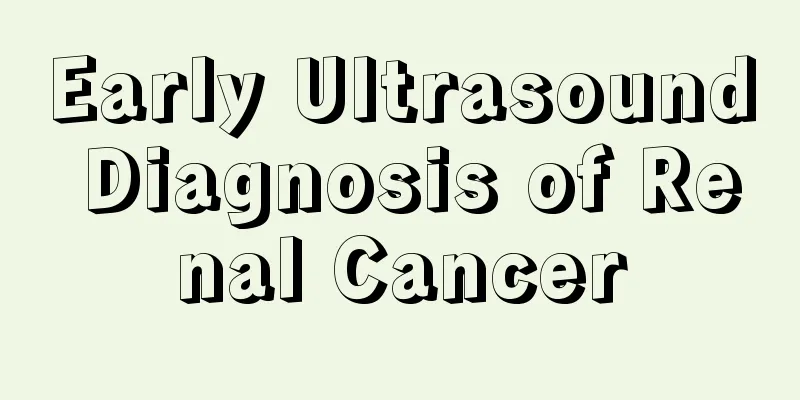What are the treatment principles for hamartoma

|
The symptomatic treatment of hamartoma is critical to the cure of the patient's condition. No matter which symptomatic treatment method is used, there will be certain treatment principles. In order to allow more patients to have a deeper understanding of the treatment methods of hamartoma and be prepared for medical treatment, let me introduce to you what are the treatment principles of hamartoma? Hamartoma, also known as renal angiomyolipoma, is a benign tumor. It can be a single disease or a manifestation of tuberous sclerosis. According to foreign reports, about half of patients diagnosed with renal hamartoma have tuberous sclerosis, which is a hereditary disease with a familial tendency, manifested as brain dysplasia, epilepsy, and cheek sebaceous adenoma. Hamartoma can also occur in the brain, eyes, heart, lungs, and bones, and can sometimes be mistaken for metastatic lesions. It is relatively rare for patients with renal hamartoma in my country to have tuberous sclerosis. The principles of treatment for renal hamartoma are as follows: 1. Renal angiomyolipoma is a benign tumor. Small tumors can be followed up for a long time without treatment. 2. If the tumor is large and tends to grow or is accompanied by pain, partial nephrectomy or simple tumor resection may be performed. 3. During surgery for bilateral renal tumors, as much renal tissue as possible should be preserved. In accordance with the treatment principles of renal hamartoma, the medical treatment measures for renal hamartoma are as follows: 1. Observation Oesterling believed that tumors <4 cm can be left untreated, but close follow-up is required. Johns Hopkins reported a group of 35 cases, some of which did not continue to grow for many years. Steiner advocated that patients <4 cm should be followed up once a year even if they are asymptomatic; patients >4 cm should be followed up once every six months if they are asymptomatic or have mild symptoms. 2. Arterial embolization should be considered first in cases of bleeding. According to experience, the volume of the tumor does not decrease after embolization, but the bleeding can be stopped. Superselective renal artery branch embolization is often used to protect some renal function. 3. Nephron-sparing surgery: Tumors <5cm can be enucleated, especially those at the edge of the kidney. However, some tumors have unclear capsules, irregular shapes, and unclear interfaces, making enucleation unsafe. In this case, partial nephrectomy can be performed. 4. Nephrectomy: Giant renal hamartomas can be treated with nephrectomy. If the disease is bilateral, more consideration should be given to the preservation of renal function. In a few cases, there may be local and lymph node invasion, or even tumor thrombus invasion of large veins, showing malignant behavior, and radical nephrectomy should be performed. 5. Kidney transplantation or hemodialysis is only suitable for patients who must undergo bilateral nephrectomy due to bilateral lesions leading to renal failure or tumor rupture and bleeding. |
<<: How to completely treat hamartoma
>>: Factors affecting the price of hamartoma treatment
Recommend
Yoga for back pain relief
With the development of the economy, people's...
How to avoid mosquito bites while sleeping
There are a lot of mosquitoes in the summer. What...
What are the consequences of not treating a cracked tooth?
Dental health is very important to people's l...
What to do if the watermelon is not ripe after being cut
In summer, watermelon is very popular among every...
My scalp feels hot when I dye my hair
Hair dyeing is a fashion, but because people go t...
Should I take Levofloxacin before or after meals?
As we all know, levofloxacin tablets are suitable...
What are the effects of preoperative radiotherapy for lung cancer
Now, according to the purpose to be achieved, rad...
Is a scoliosis brace useful?
Under normal circumstances, our spine looks like ...
How to improve oily hair? Rely on these six methods
The adverse effects of oily hair on people are hu...
How should patients with prostate cancer arrange their daily diet?
Prostate cancer is a disease that makes many men ...
My lips are swollen for no reason. What's going on?
We know that lips have always been a high-inciden...
What is the reason for coughing and vomiting
Coughing and vomiting are also common symptoms. T...
Metastasis pathways and symptoms of esophageal cancer
The early lesions of esophageal cancer are confin...
Skin cancer can be caused by many factors
Skin cancer is a common disease in our daily life...
The difference between clams and clams
Clams are a kind of aquatic product. Clams and cl...









